The easiest way to up your pie game is by infusing flavor directly into the pie crust, and here, I use vanilla extract! Whenever I make a fruit pie (like my cherry pie with almond extract), I use this all butter vanilla pie crust recipe. It adds a delightful hint of vanilla that also helps prevent your crust from developing too much gluten—a win-win!
This is the pie crust I use for all my mini pies made in muffin pans, like my mini cherry pies and mini pumpkin pies. I also use it for making homemade cherry pop tarts, and they turn out more like homemade Toaster Strudels because of all the layers!
One reader, Ethel, commented, “I followed your instructions, and it turned out perfectly. The crust was flaky, as with my peach pie. All loved it immensely with ice cream and coffee. Thanks, I too, always thought making home made pie crust was hard, but this recipe has changed my ways.” ★★★★★
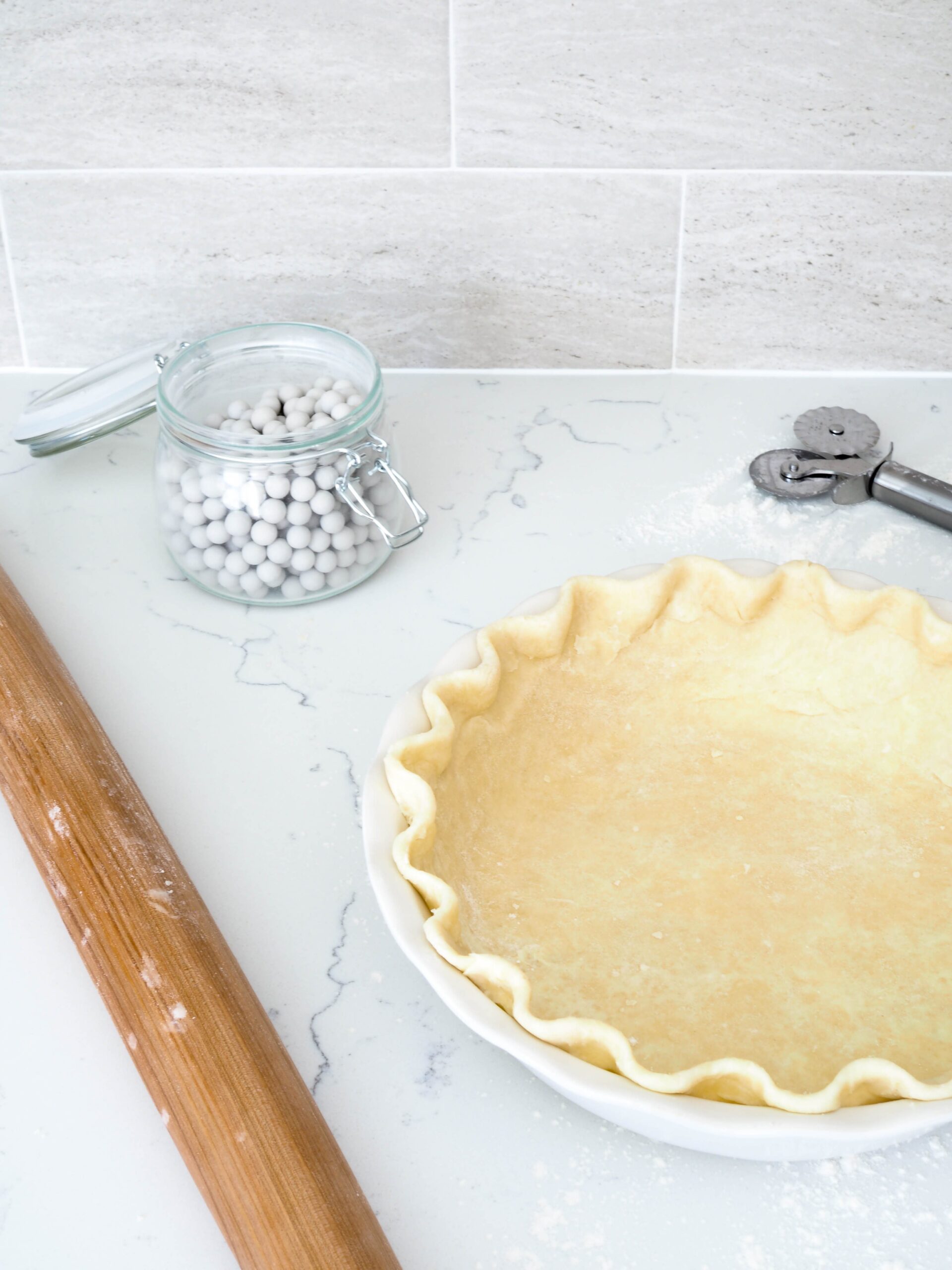
Homemade Vanilla Pie Crust Ingredients
This pie crust recipe is almost the same as my flaky all-butter pie crust recipe, but this one has a hint of vanilla extract. The flavoring makes this pie crust a perfect pair for sweet fruit pies, and the only ingredients you’ll need are ones that you already have in your pantry!
- All purpose flour. Regular flour has the best protein amount for pie crusts. You don’t want much gluten development, but there does need to be a little bit to help the crust hold together.
- Salted butter. Butter is key to flaky pie crusts. The water in the butter evaporates in the oven, leaving behind a flaky layer. If you use salted butter, you don’t have to add salt! If you only have unsalted butter, plan to add ¼ teaspoon of salt for flavor.
- Water. The colder, the better for inhibiting gluten development and keeping that butter solid!
- Vanilla extract. Just a little bit mixed into your cold water adds a subtle vanilla flavor to the entire pie.
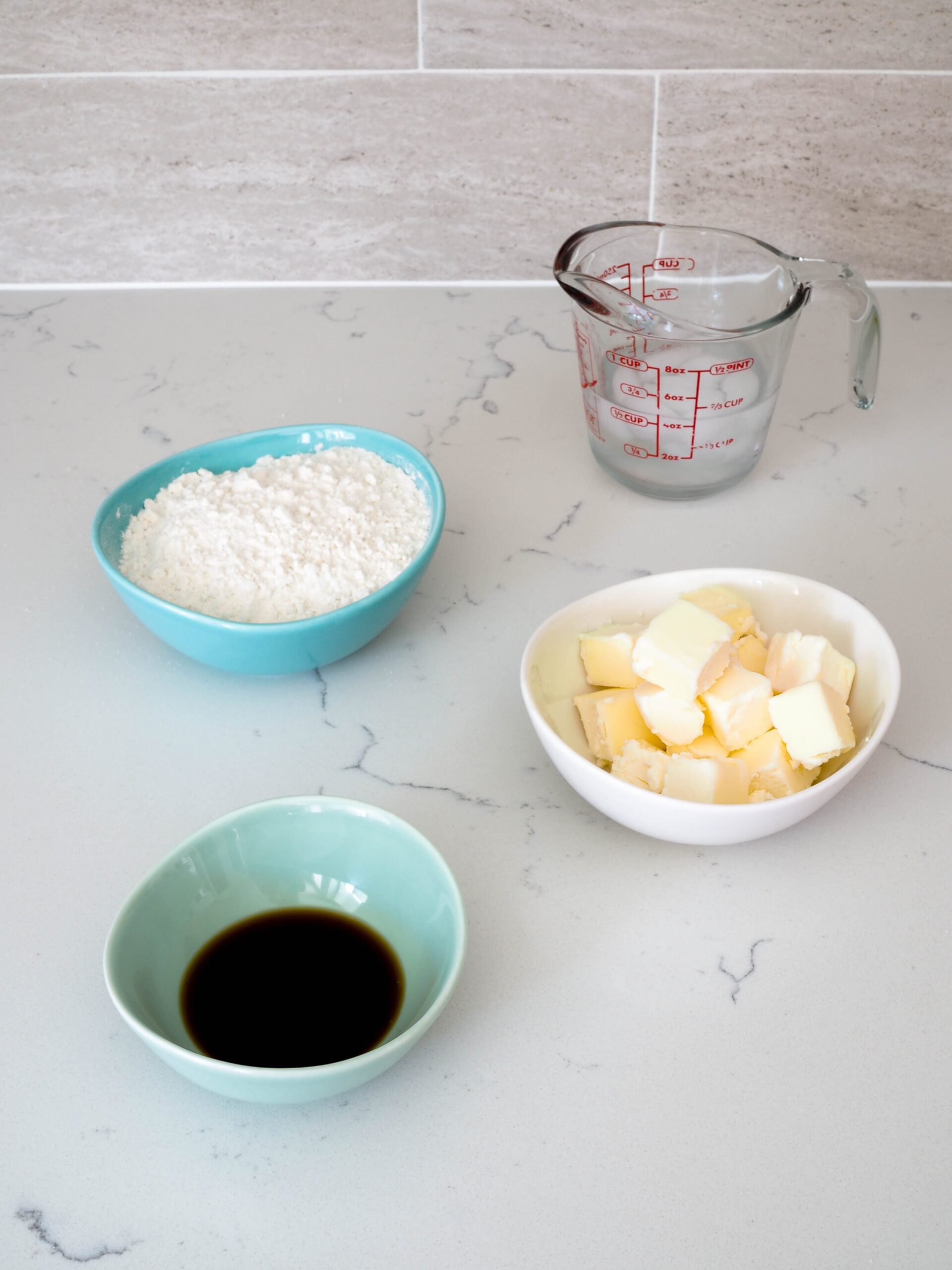
How to Get a Perfectly Flaky All Butter Pie Crust
I grew up thinking that good, flaky pie crusts were difficult to make. I thought that there was some special ingredient that made them flaky, or that the butter had to be a certain kind, or that you had to use an exact amount of water each time.
I’m happy to report that really couldn’t be further from the truth. If you’re capable of simply following directions, you can make a flaky pie crust on your very first try. There are all kinds of crusts out there, so while you may have Aunt Deb’s famous pie crust at the top of your list, your pie crust can come in at a close second.
There are two things to keep in mind when making pie crust: Butter and gluten.
Butter’s Role in Making a Flaky Pie Crust
Pie crusts are flaky, for the most part, because of the water content in the butter. Compared to other kinds of fat, butter has a high water content. Most butter made in the United States is about 18% water, whereas something like shortening is 0% water.
When you put the crust in the oven, the water from the butter starts to evaporate and turn into steam. Steam naturally takes up more volume than dry air, so the pocket of dough expands under the pressure. The steam then escapes and leaves behind an air pocket. The fat remains, leaving you with a delicious layer.
Size Does Matter
The size of the pieces of butter you use in your pie crust will directly correlate to the flakiness.
If you want large flakes, you will need to have large pieces of butter incorporated into the dough. I like to use chunks of butter that are about the size of grape. If you want smaller flakes, small pieces of butter will need to be incorporated into the dough.
I start by breaking up all the large pieces of butter before moving on to slightly smaller ones. When my largest piece of butter is the size of a grape, I give the dough a flip to verify I’ve gotten all the chunks to the size I want. Variety in the size of butter chunks also helps create a flaky crust.
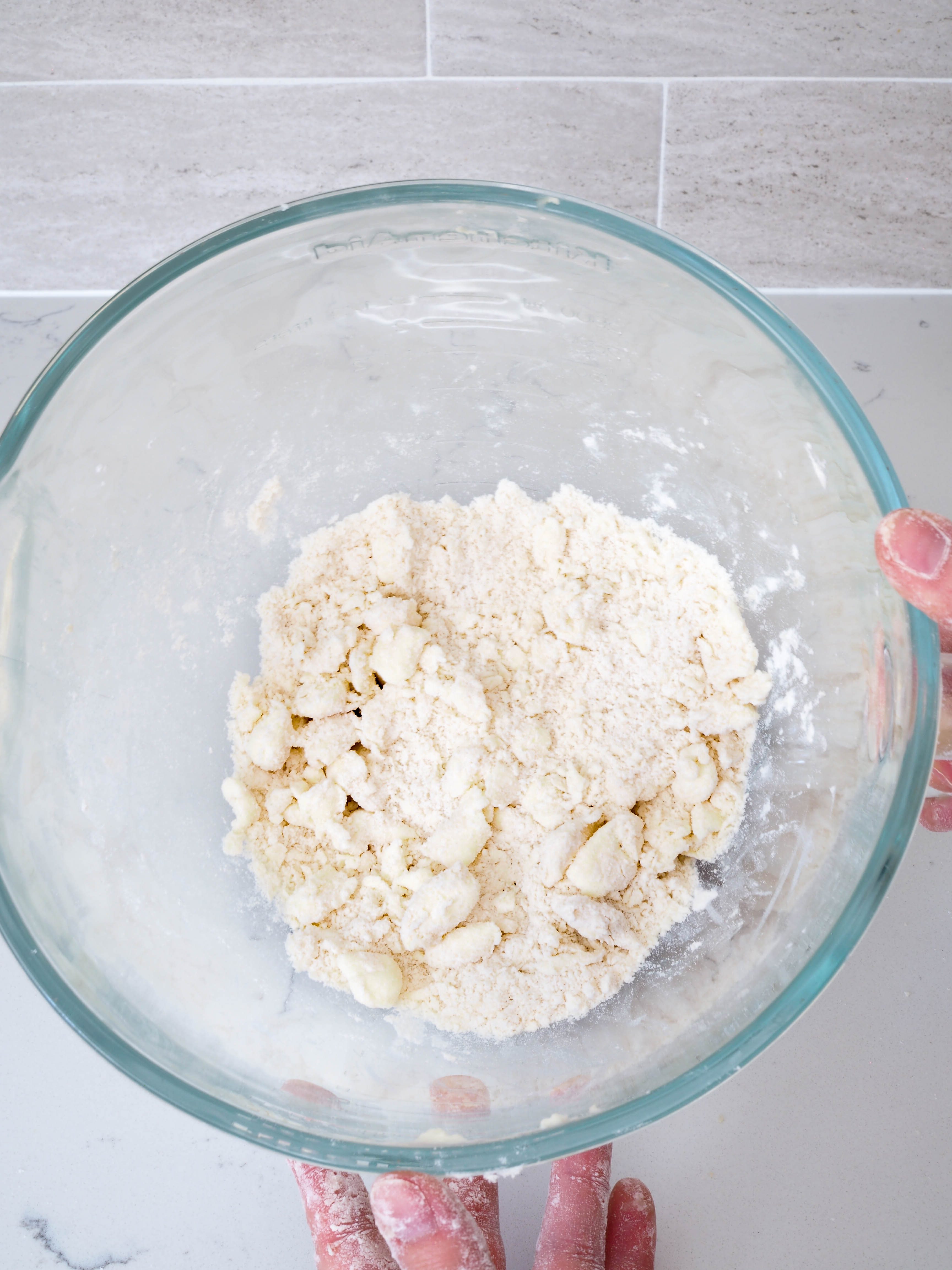
Gluten’s (Lack of a) Role in Making a Flaky Pie Crust
The second thing to keep in mind when making pie crust is gluten. Gluten forms when wheat proteins come into contact with water. Additional mixing continues to hydrate the dough, resulting in gluten development and a chewy crust rather than a flaky one.
To keep pie crusts flaky and not chewy, it is imperative to keep the gluten development down. You can do this by making sure not to overmix the dough and by adding in some alcohol, like vanilla extract.
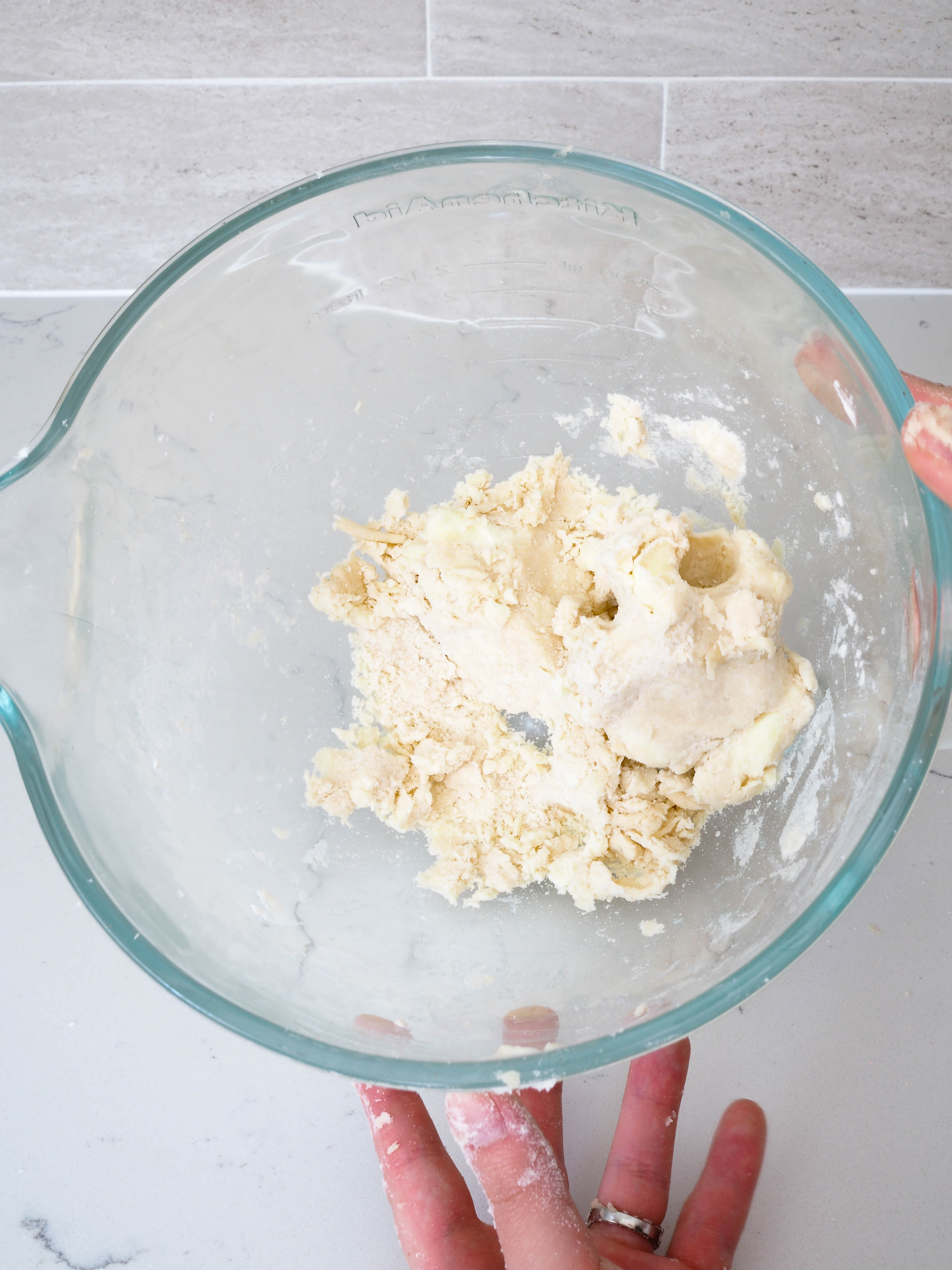
Using Alcohol to Help Reduce Gluten Development in Pie Crusts
Ethyl alcohol prevents water molecules from binding with the wheat proteins, so it actually inhibits some gluten development. All vanilla extract in the United States has at least 35% ethyl alcohol. That amount of alcohol doesn’t prevent all gluten development, but it helps bakers make a better, more flaky pie crust more consistently.
And while there’s not enough alcohol in vanilla extract to prevent excess gluten development from overmixing, it provides a little extra insurance when mixing the dough together. It also adds a light vanilla flavor to the pie crust that helps the flavors in the final filling to shine.
Quick Tips for Making All Butter Vanilla Pie Crust
The temperature of the butter is quite important in this recipe, so pay close attention to your butter. If the butter starts to go soft at any point in the process, place the entire bowl in the fridge, covered, for 15 to 20 minutes to firm up the butter. Warm butter won’t hold its shape as easily and can result in unintentionally smaller pieces due to that.
When rolling out the dough, use a lightly floured surface and rotate the dough a quarter turn after each roll. This will prevent the dough from getting stuck to the counter. Add flour sparingly, but do so as needed to prevent sticking.

Other Recipes You May Enjoy
Use this pie crust in any recipe that calls for a single crust, or double it for a double crust recipe. See all of my pie recipes here.
Upgrade a classic with my cherry pie with almond extract recipe. The vanilla in the crust really shines!
Did you know that leftover pie crust is amazing in ice cream? My cherry pie ice cream recipe is one-of-a-kind and totally delicious, as is my pumpkin pie ice cream.
Dish Cleanup: Not Too Bad
I rate my recipe cleanups on a scale of 1 to 5. 1 is only a handful of dishes, and 5 is everything including the kitchen sink.
My all butter vanilla pie crust recipe has a cleanup rating of a 2. Pie crust can take a little time to master, but the dishes are no sweat. I like to wipe everything out with a paper towel to reduce the amount of fat that I have to wash off in the sink.
If you’re like me, you may also have butter and flour all over the fridge handles, too, but those are easy enough to wipe off!
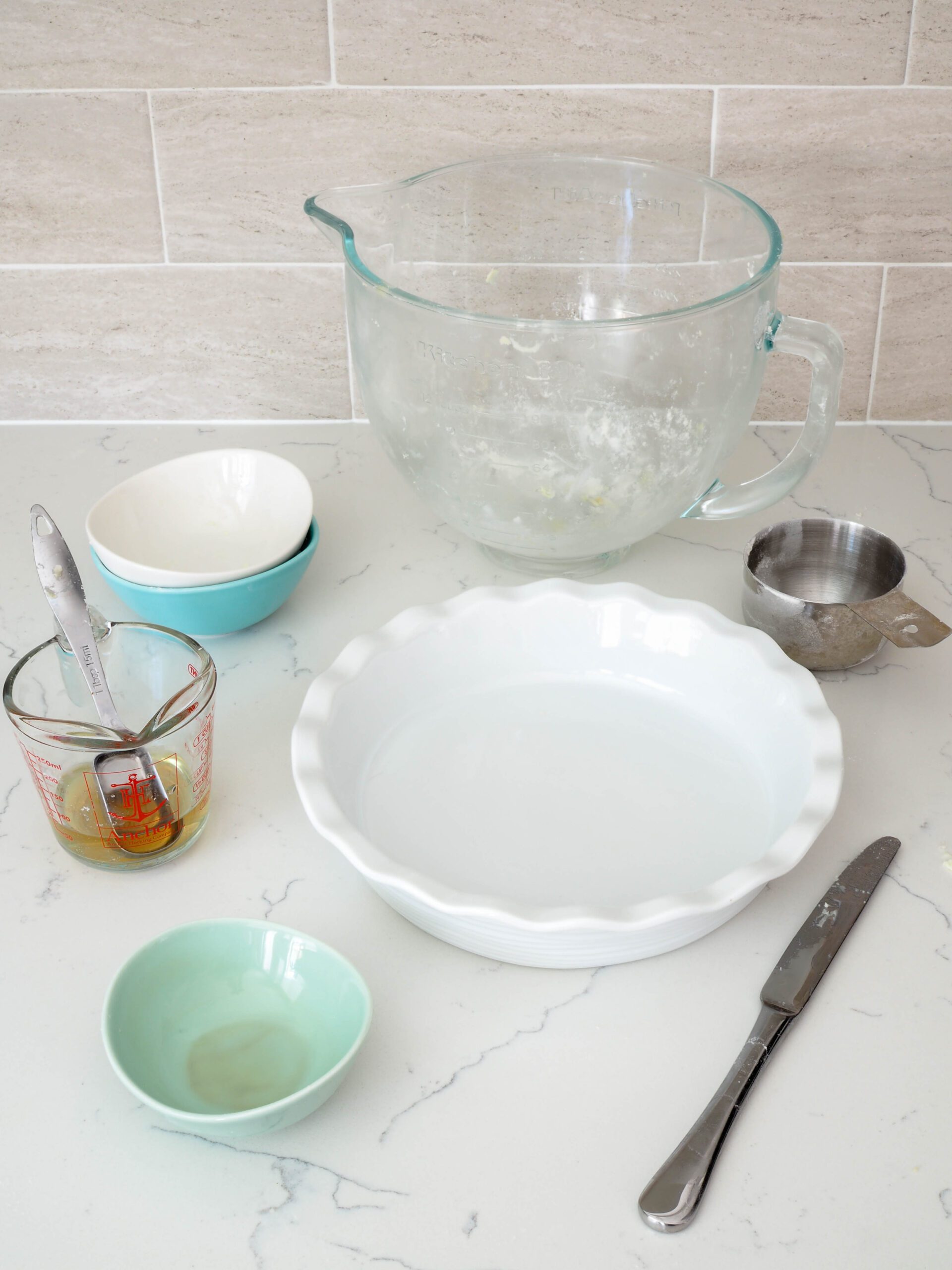
Vanilla Pie Crust Recipe
Thanks so much for stopping by!
If you make this vanilla pie crust and love it, please don’t forget to rate the recipe five stars.
All Butter Vanilla Pie Crust
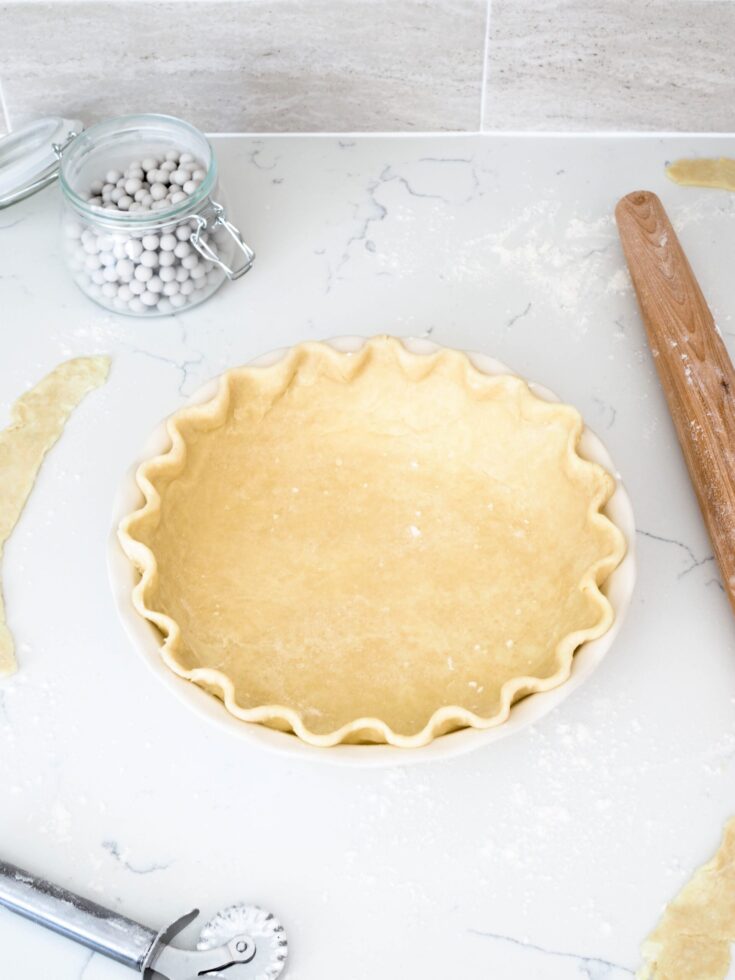
This perfectly flaky homemade pie crust is made with vanilla extract (the secret ingredient!) and pairs well with nearly any sweet pie filling. Double this recipe for a double crust!
Ingredients
- 1 cup all purpose flour (140 g)
- 8 Tablespoons salted butter, cold (113 g)
- 1 Tablespoon vanilla extract
- 2-3 Tablespoons ice cold water, divided (30-45 ml)
Instructions
- Remove the butter directly from the fridge and cut it into small cubes.
- Place flour and cubed butter in a medium bowl. Then, take a cube of butter coated in flour in your fingers. Rub the cube between your thumb and first two fingers. It will break up and flatten into smaller pieces, each becoming coated with flour. Drop the pieces back into the bowl, give it a stir, and then grab another flour-coated cube. Repeat this with all the cubes until the largest chunk of butter is about the size of a grape. You may need to rub some of the larger pieces multiple times.
- In a small bowl, combine 2 Tablespoons of ice cold water with the vanilla extract. Pour over the flour mixture, then begin folding the dough together. Slide your hand down the edge of the bowl until you get to the bottom, and then flip the mixture on top of itself. Then divide the dough in half down the middle and squeeze the sides together. Continue doing this until all the water has been absorbed and no pockets of water remain. Do your best to gently guide the flour where you want it to go rather than forcing it in the direction. Less movement will result in less gluten development, which will result in a perfectly flaky crust.
- If the dough is still crumbly and flour remains at the bottom of the bowl, add in another Tablespoon of ice water and gently fold together until all the flour mixes into the dough. Generally, I use a total of 3 Tablespoons of liquid in winter and 4 Tablespoons in summer.
- Remove the dough from the bowl and place on top of a piece of plastic wrap. Lightly shape the dough into a disc, then cover completely with the plastic wrap. Refrigerate for at least 2 hours or up to 2 days.
- When ready to use in a recipe, roll out the dough on a lightly floured surface. Rotate the dough a quarter turn between each roll to ensure it doesn't stick to the work surface and dust with flour as needed.
Notes
This dough freezes well! Simply place your wrapped disc of pie dough in a freezer bag and store in the freezer for up to 3 months. Thaw overnight in the fridge before using.
If you have any leftover offcuts after placing this crust in a pan, cut them into strips and bake them at 375°F/190°C for 5-10 minutes. Put them in an airtight container in the freezer and then use them as a topping for ice cream.
Recommended Products
As an Amazon Associate and member of other affiliate programs, I earn from qualifying purchases.
Nutrition Information:
Yield:
8Serving Size:
1Amount Per Serving: Calories: 163Total Fat: 12gSaturated Fat: 7gTrans Fat: 0gUnsaturated Fat: 3gCholesterol: 31mgSodium: 93mgCarbohydrates: 12gFiber: 0gSugar: 0gProtein: 2g
The nutrition facts are estimated and may vary based on specific ingredients used.
Thanks for trying out my all-butter vanilla pie crust recipe! I’d love to see how it turns out: Take a photo and tag me on Instagram @floralapronblog to share with me, or use the hashtag #floralapronbakes.
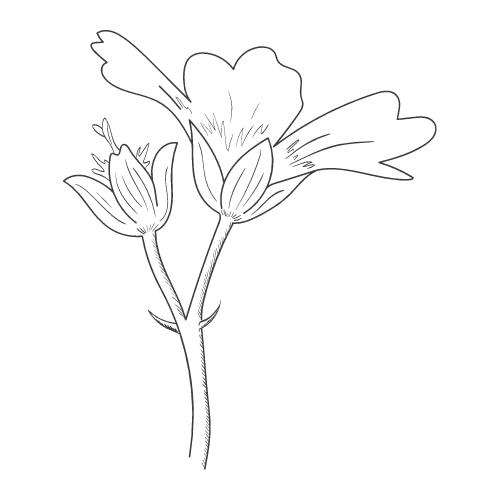
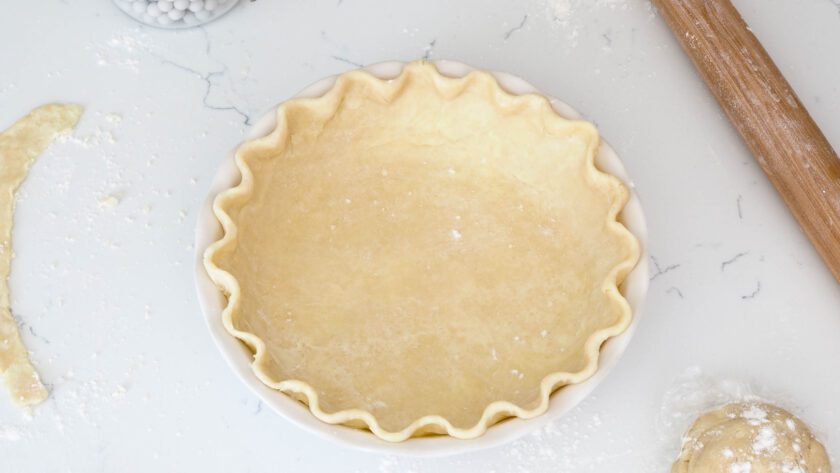



How long do you bake this for? And do you do a blind bake?
Hi Danielle,
Baking temp and time vary depending on the size and kind of pie, so I haven’t included those instructions in the recipe card. Same goes for a blind bake—custard-based pies will usually require a blind bake, but fruit pies will not. I’d recommend following the instructions on a pie recipe to make sure your pie crust bakes properly 🙂
Here are some of my favorites if you don’t have a recipe in mind yet (none of which require a blind bake): Mini cherry pies, mini blueberry pies, and cherry pie with almond extract.
Just wanted to say I am here because I saw your post on Reddit on the Twist Test! Great idea and I hope I can learn to make a crust like your beautiful lattice one:) Wonderful website and I will be back!
Thanks so much, Letty! Glad to have you around 🙂